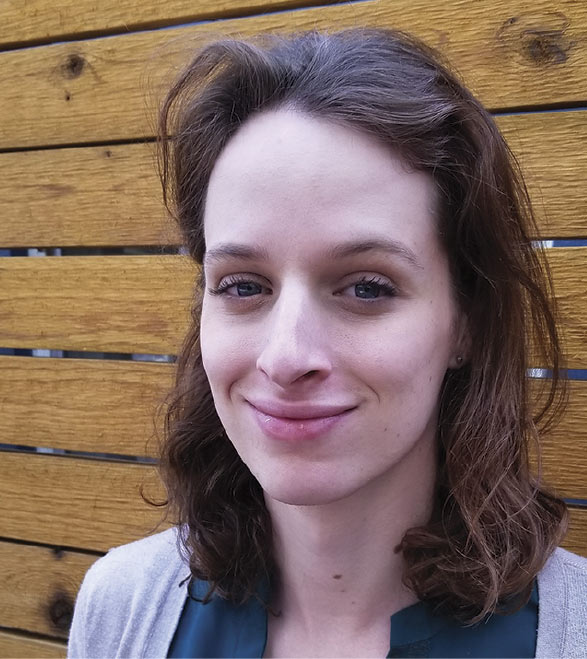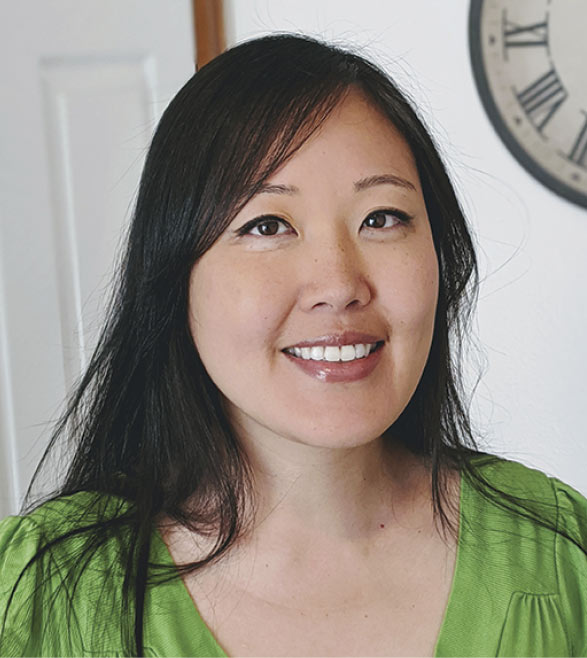POLINA POTOCHEVSKA, EDITORIAL INTERN
 A Serendipitous Start to a Career in Optics: Juniper Pollock
A Serendipitous Start to a Career in Optics: Juniper Pollock
Graduate students studying optics and photonics across the country have continued their work, despite the difficulties imposed by the COVID-19 pandemic. One such student, Juniper Pollock, is studying at the University of Colorado. She also works at NIST in John Kitching’s group, which focuses on atomic devices and instrumentation.
Pollock’s introduction to the world of optics was “serendipitous,” she said in an interview with Photonics Media. She attended a small liberal arts college, so her options for research were “limited at best.” While looking for opportunities elsewhere, she discovered the Research Experiences for Undergraduates (REUs) summer programs sponsored by the NSF. The moment was a breakthrough. She worked on x-ray spectroscopy at the SLAC National Accelerator Laboratory and with particle physics simulations as a part of the ATLAS Experiment at the European Laboratory for Particle Physics (CERN).
After working on such large experiments, she decided to try physics on a much smaller scale.
“I was intrigued with the lab-sized experiments in atomic molecular and optical physics,” Pollock said. “For the last four or so years I’ve been happily learning about and exploring optics.”

She continues to investigate optics at NIST, where she researches AC Stark shifts, or systematic frequency shifts in atomic clocks caused by laser light used to probe the clock transition.
It is not all about technologies and calculations, however. Pollock said creativity is required for working in physics and for “applying physical phenomena to make a difference in people’s lives.” She said she is interested in discovering the fundamental processes that exist in the universe, including how humans can use atoms and light as sensors.
“Finding ways to apply physical phenomena to create new technology requires a huge knowledge base and creative thinking. There are many unexpected and often unknown problems in research, and creativity is an important part of navigating through them,” Pollock said.
Pollock has completed a master’s degree but is not quite working as a full-time doctoral student. She said work-life balance is essential. She prioritizes her physical and mental health to ensure her work doesn’t suffer.
When the NIST campus temporarily closed, Pollock needed to work from home. She began focusing on theoretical work and calculations for a new experiment until she could get back into the lab to take data. Additionally, she has been mentoring an undergraduate student remotely. “I’m happy that I can provide this important experience despite the difficulties of the time,” she said.
Pollock is ambitious about making an impact. “I often find that my current research doesn’t quite satisfy my urge to make a difference in the world. … So, in addition to my research, I try to broaden my understanding of the world and learn about efforts being made to combat climate change and foster inclusivity,” she said. “I hope to combine my passion for physics, technology, and measurable change in the future.”
Her next challenge is to search for her dream innovation. “I have kind of stumbled into the field in graduate school, and I feel like my understanding of the topic has just started to catch up to the cutting edge,” Pollock said. Her ideal innovation would involve “using light-atom interactions to foster a more sustainable world,” either by providing solutions to or furthering more knowledge regarding climate change. For now, she is focused on completing her doctorate while looking forward to the opportunities ahead.
Forging a Path into Experimental Physics: May Kim
May Kim’s journey to becoming an experimental physicist has been a circuitous one. Her nontraditional route into the world of optics began late in her undergraduate career.
She majored in English and minored in computer science with a concentration in premedicine at Wellesley College in Massachusetts. However, Kim realized during her senior year that medical school was not the right path for her. “It was my mother’s dream more than mine,” Kim said in an interview with Photonics Media.
When Kim took a course on calculus-based physics, she realized it was what she wanted to study, but she struggled after college to find her path. During that time, she also paused her studies to support her mother, who was opening a textile studio in New York City. Kim and her brother helped get the business off the ground, and once it was stable, she was able to start taking physics courses at Columbia University and Rutgers University.
When she had completed enough required courses to be a physics major, she was admitted to Michigan Technological University and was introduced to quantum computing. She decided to focus on atomic physics at Northwestern University for her doctorate. Kim now works as a guest researcher at NIST under a fellowship from the Intelligence Community Postdoctoral Research Fellowship Program.

As an experimental atomic physicist, she works to implement algorithms that make more precise atomic clocks. The optical atomic clocks at NIST are so accurate, she said, that they “will not lose a second during the entire age of the universe,” which is thought to be approximately 13.7 billion years old. The clocks can be used to test theories in fundamental physics and relativistic geodesy.
“Being a researcher at NIST is honestly my dream job. I can only say that I got here with a lot of hard work and trust from people who took a chance on me along the way,” Kim said.
Before the NIST campus was closed due to the COVID-19 pandemic, Kim would start her workday around 8:30 a.m., checking the lasers to see whether they were locked to the correct frequency overnight and if any needed to be turned on. “Then I load the ion trap with a calcium ion and an aluminum ion. We run a lot of tests to ensure our experimental settings are still good, such as the laser power, beam pointing, and laser frequency. We can then begin the experiment for the day,” she said.
Kim hopes to one day make atomic physics experiments — building vacuum chambers, homemade lasers, and neutral atom or ion traps — more accessible to undergraduate institutions to aid students who are considering graduate school. Other goals include motivating women to pursue physics and helping adults take science more seriously. She said she feels frustrated when people dismiss the scientific knowledge surrounding climate change “because they think that scientists have some sort of agenda or bias.”
In her own research, Kim has trapped single neutral atoms in optical tweezers and trapped single ions, and she wants to research bringing them together.
About her experience of being a woman in STEM, she said, “We are in this field not because it is easy but because it is a sort of a calling.” To those pursuing the path, Kim said, “We need more minorities and women in STEM, so welcome aboard!”